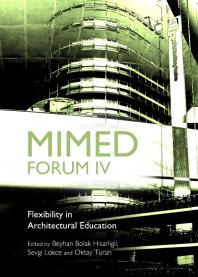Product desciption
Mimed Forum Iv Flexibility In Architectural Education 1st Edition Beyhan Bolak Hisarligil Sevgi Lokce Oktay Turan by Beyhan Bolak Hisarligil; Sevgi Lokce; Oktay Turan 9781443865814, 1443865818 instant download after payment.
This book is the outcome of one of the Forum Series on Architectural Education, organized by the Architectural Education Association of Turkey (MIMED) on the theme of “Flexibility in Architecture.” At Forum IV, the architectural education platform was cross-examined, new ideas and experiences were shared, and the potentials of “regeneration” were discovered. The notion of flexibility in architectural education is the subject of fresh and vital debate which is based on whether it is achieved by the inner dynamics of architecture, or the external dynamics. However, this debate seems null and void since the dynamics of both sides seem to necessitate flexibility in architectural education at almost the same level. Hence the attitude that the prerequisite for creating flexibility according to the inner dynamics of architecture depends on the protection of architectural education from the coercive effects of external dynamics is no longer a relevant issue. Furthermore, architectural education as a role model in such a debate becomes more important, not only in a monotyping global context, but also in the local social context as well. Herein lies a fundamental dichotomy arising from the fact that because of globalization curricula may face the risk of becoming uniform. Any effort to overcome this dichotomy in such a debate seems vital. Then, the question arises whether such a dichotomy, which turns architectural education from an autonomous discipline into a quasi-autonomous one, transforms architectural education into a rather political issue. If the autonomous nature of architectural education resists globalization, the question of the manner in which this resistance occurs and what impact it will have on architectural education seems of the utmost importance.The volume begins with a preface by Gulsun Saglamer, President of MIMED. Contributors include Juhani Pallasmaa, Kim Dovey, Kojin Karatani, Herman Neuckermans, Conall Ó Catháin, Mark Olweny, Ugur Tanyeli, Ferhan Yurekli, Gulsun Saglamer, Fatma Erkok, Rengin Unver, Cigdem Polatoglu, S. Mujdem Vural, Iris Aravot, Acalya Allmer, Sigrun Prahl, Aslihan Senel, Sevgi Turkkan, Burcin Kurtuncu, Sait Ali Koknar, Ozlem Berber, Funda Uz Sonmez, Akin Sevinc, Danelle Briscoe, Kurt Gouwy, Aydan Balamir, Mine Ozkar, Basak Ucar, Semra Arslan Selcuk, Arzu Gonenc Sorguc, Sema Alacam, Esra Gurbuz, Urs Hirschberg, and Ahu Sokmenoglu.


